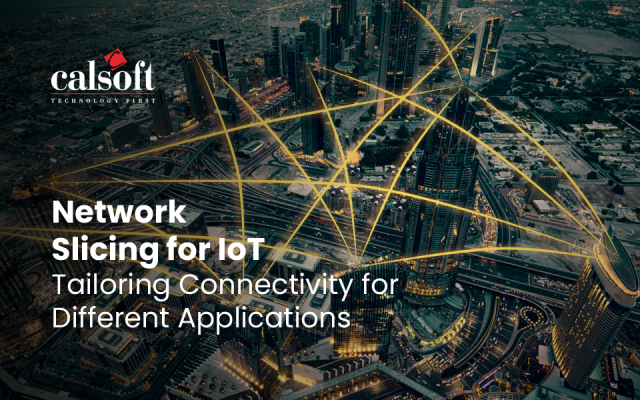A game is afoot in the thrilling world of mobile communication. It is an exciting game that has sparked countless fantastical and sometimes utterly delightful conspiracy theories; theories that range from Open RAN for 5G being the cause of the coronavirus to this new architecture being more vulnerable.
While it is easy to dismiss these conspiracies and call the perpetrators thick-headed, flipping through the pages of history, we can find that all new tech has been met with skepticism, and that new developments in technology, especially mobile communication, are usually so convoluted, that they do seem impossible and magical. So, the objective of this blog is to demystify the newest, globally lobbied movement – Open RAN.
Understanding Open RAN
Open RAN refers to open radio access networks and consists of a set of technological approaches. This transformative set of approaches involves a more accessible, open cellular radio network architecture that comprises hardware and software components manufactured by multiple vendors.
Such a flexible ecosystem of vendors ensures interoperability between the different components of radio equipment. In simple terms, in Open RAN, the radio access networks are an open playground for multiple vendors supplying RAN equipment. This kind of interface eliminates the rigidity of proprietary, single-vendor legacy systems, and prevents potential technology lock-ins. It is the immediate next step in RAN innovation.
The Open RAN concept is as easy to understand as it is promising. Let’s dig a little deeper.
How Open RAN works
Open RAN gets rid of the traditional system of proprietary interfaces between the baseband unit (BBU) at the foot of the cell tower and the remote radio unit and introduces a disaggregated architecture that has Commercial-Off-The-Shelf (COTS) hardware based on standard x86-based processors along with software-based solutions. Check out this insightful eBrief to know more about how Open RAN works.
Open RAN enhances all that makes 5G distinguished − efficiency, intelligence, versatility, and unparalleled speed. When deployed at the edge of the network, it revolutionizes 5G applications such as IoT, autonomous vehicles, domestic & healthcare devices, and spatial computing.
Pioneers in the field stress the potential of Open RAN. It is touted to improve competition, network flexibility, and cost. Ergo, the market landscape seems promising.
What the numbers say
Market value projections show significant potential investments. The interest in Open RAN deployment is gradually reaching a fever pitch. Word around the industry is that Open RAN investments instances will reach billions of dollars per year by the year 2026-27.
Here are some developments that lend weight to this prediction:
Vodafone is planning a rural Open RAN deployment in 2021 and urban deployment in 2022. Vodafone already has an Open RAN-based 4G site in the UK.
Similarly, Telefónica, a Spanish multinational telecommunications company has reportedly invested in Open RAN networks in Latin America and planned notable investments in Europe. The CTO of Telefónica Enrique Blanco has suggested that “Open RAN is the natural evolution of radio access technologies and it will be key for 5G networks.” He also adds that “the ambition is for open RAN to reach up to 50% of the 4G and 5G RAN growth between 2022 and 2025.”
In addition to these latest developments, the crystal ball gazers from one of the most reputed research firms Dell’Oro predict a total spend on Open RAN technology during the next five years to be more than $5 billion.
The foreseeable future of Open RAN paints a rosy picture.
Benefits of Open RAN to telecoms
Open RAN is driven by independent operators and allows Communications Service Providers (CSPs) to operate and manage their own network, enabling them to acquire the best customized services to put together best-of-breed networks. This ecosystem helps CSPs regulate and optimize prices and dramatically reduce the time to market.
Another benefit of opting for an Open RAN network is that mobile network operators can upgrade legacy proprietary boxes and usher in innovation instead of updating an aging proprietary box with a new similar one and dealing with technology lock-ins. But apart from technology lock-ins, there are other inefficiencies attached to the traditional RAN too.
Problems with traditional RAN
With the traditional RAN, CSPs are bound to the RAN equipment manufactured for them. As a result, rapidly deploying services and driving change to match the demand becomes unwieldy and slow. Adding new components or expanding the infrastructure is expensive and complicated.
A small number of vendors provide legacy RAN hardware and software to CSPs, making it difficult to switch vendors based on demand.
The COVID-19 pandemic has spawned monumental changes in the telecommunication sector. CSPs with legacy hardware and software powering their RAN found it difficult to meet the changing needs of the new industry and launch new services or maintain and strengthen the existing ones. The scaling proved time-consuming and cost-intensive for network operators. Had it been a COTS-based or software-driven ecosystem, it would have been possible to implement high-level automation with a DevOps or CI/CD approach.
Currently, most RANs implement dedicated hardware for the modulation and management of the frequency range used for cellular network transmission coupled with proprietary interfaces for the front-haul from the BBU to the remote radio unit (RRU) at the top of the transmitter mast.
Telcos are forced to engage a single vendor for the baseband and the radio. This has led to the market being dominated by the ‘big three’ − Ericsson, Huawei, and Nokia followed by Samsung and ZTE.
Competition tends to fuel innovation. With competition almost non-existent before worldwide support for Open RAN, innovation was stunted. The Open RAN approach exposed many such problems of the traditional RAN’s arrested development.
Legacy RAN remains clunky, resource-intensive, and inefficient because of redundant equipment consuming tremendous amounts of power. A limited number of dominant market players has caused the prices to soar and the players themselves remain more or less unchallenged. Plus, legacy RAN tends to be inflexible and unagile too.
Luckily, with an uptick in Open RAN deployment, the marketplace has become global and opened the doors for worthy software service providers such as Calsoft to lend their expertise and drive innovation.
Calsoft and Open RAN
2020, along with many other things of scale, was the year of Open RAN. The global scenario called for rapid changes and improvements to make telecommunication better and easier. 2021 will see a steep rise in Open RAN adoption. Calsoft, with its decades of experience and domain knowledge, is ready to take on this challenge and has been the perfect partner for cloud native software solutions involving end-to-end orchestration & automation, network slicing, analysis, and monitoring for Open RAN.
References:






